Updated 27/07/2025
As a fugitive for the Nazis because you didn’t want to be employed in Germany, or because you are of Jewish origin, then one had many enemies, but the police are your best comrade? Right? Yeah?
What kind of problems could someone expect in the Netherlands in the Second World War:
Gestapo
The Nazi political police were the Sicherheits Polizei – Sicherheidsdienst (SIPO-SD). One part of it was the Gestapo. The main tasks were the struggle against groups that the Nazis were targeting, the resistance and the Communists and the monitoring of the persecution of the Jews. The number of troops at their disposal was limited, but the effectiveness was increased by the recruitment of local officers and a cooperation with the local police forces.
The Dutch SS
The Dutch SS was founded on 11 September 1940 and was called the German SS from 1 November 1942.
The goal of Heinrich Himmler was:
– Taking an important position in the country
– The recruitment of volunteers for the Waffen-SS
– Direct the National Socialist Movement (NSB) of Anton Mussert in the right direction
– Making propaganda
Mussert initially did not want to cooperate and even forbade you to register for the Waffen-SS, but because his position was soon compromised, he nevertheless agreed to the establishment of the Dutch SS, as part of the NSB with Henk Feldmeijer as foreman. In order to be able to register for participation, one had to meet the following requirements:
– Demonstrable Aryan lineage from 1800 (1750 for officers)
– No dishonorable criminal sentences
– At least 1.72 meters in length
– Physically healthy
– Age between 18 and 30 years
– Unconditional obedience to higher ranks
The Germanic SS was involved in raids against Jews for deportation to death camps.
Germanic SS organizations
Netherlands – Germanic SS
Belgium – Germanic SS Flanders
Norway – Germanske SS Norge
Denmark – Schalburg Corps
Switzerland – Germanic SS Schweiz
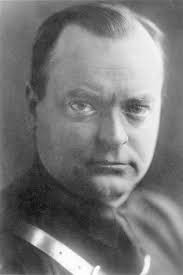
The NSB
The National Socialist movement was soon notorious for cooperation with the Nazis. As a NSB’er you were a traitor. The NSB was not a party but a movement. The expectation of the number of voters in the elections for the House of Representatives in 1937 was 10 seats, but it only became 4. A united front was already created by the other parties against the NSB. The example for the NSB was the situation in Italy where Benito Mussolini had replaced the parliamentary system with a one-party stand with Mussolini as leader. In the Netherlands, this role was reserved for Anton Mussert.
The NSB’s programme had many similarities with that of the other fascist parties in Europe. Just like in Germany, the international crisis struck in the Netherlands in 1929, with the low point being 20% unemployed. In the propaganda it was proclaimed that existing democracy was only good for the rich and that socialism led to bloodshed. This message also caught on because in Germany the NSDAP managed to reduce unemployment.
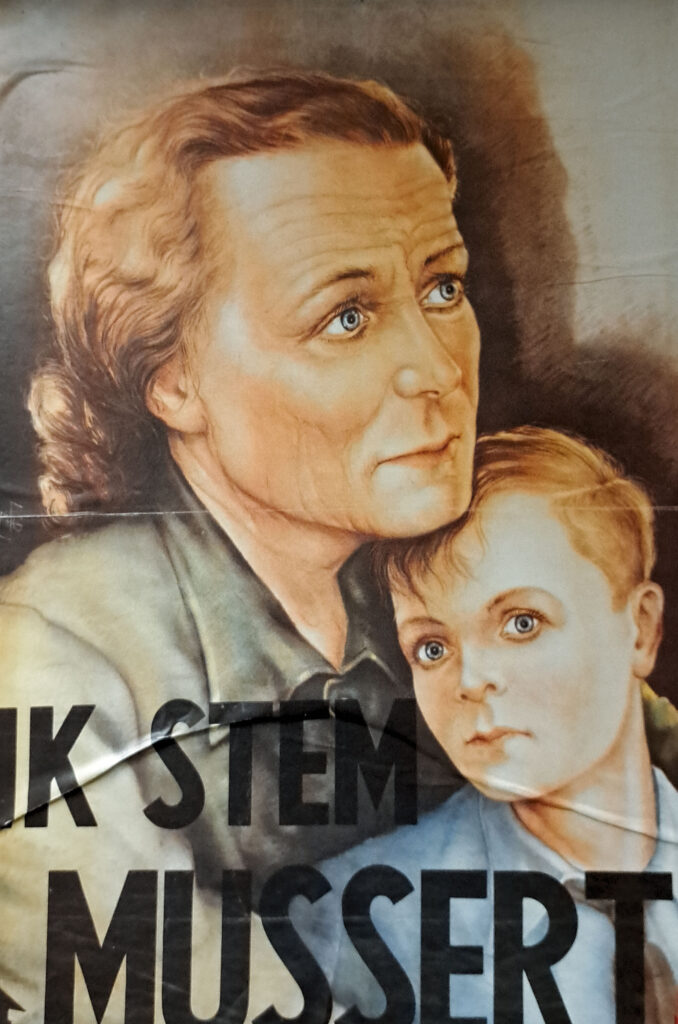
Mussert, however, was not Hitler and did not have great rhetoric, but was appreciated for his dedication to the Dutch cause. The second man of the NSB, Cornelis van Geelkerken, held the speeches instead of Mussert and had a smooth chat.
Another parallel with the NSDAP was the image of the Weerbaarheids Afdeling (WA), the order service of the NSB. Black uniforms, cap and torque belt and black boots, similar to the SA in Germany. There was also a youth movement just like the Hitlerjugend in Germany.
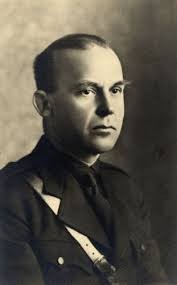
In 1932 the NSB had 100 members, in 1935 33,000 members. The number of members rose to 55,000, but declined to 30,000 in early 1940. The program did not contain an armed revolution but reducing the parliamentary democracy from within. In 1936, Meinoud Rost van Tonningen became group leader and later became the opponent of Anton Mussert. At the beginning of the NSB there was no anti-Semitic attitude towards the Jews, but in October 1938 there were no longer Jews allowed to be members of the NSB. In this way, the NSB became ever closer to the NSDAP. On November 16, 1936, Mussert made his first visit to Hitler.
In the invasion of the Germans in 1940, Mussert went into hiding in anticipation of what was going to happen. But after the capitulation on May 14, Mussert reappeared, sided with the Germans and offered his services. However, the Germans were not impressed by Mussert’s capabilities and did not hand over power to the NSB.
In March 1940, the NSB had 28,859 members, in October 1940 86,389 members. However, the aversion from the people towards the NSB increased. On 14 December, the NSB was the only party in the Netherlands permitted by the Germans. On 12 December 1941, the oath of allegiance to the Führer was taken and the NSB became the leader of the Dutch people. But that didn’t mean anything. In 1944, a third of the mayors were members of the NSB. Within education and the police, members of the NSB were also overrepresented. Tobie Goedewaagen became the Dutch Goebbels and provided the propaganda. On 28 November 1940, the Reichskommissar Seyss-Inquart appointed Goedewaagen as Secretary-General of the Department of Public Information and the Arts. Max Blokzijl gave his weekly radio talk. Volk en Vaderland became the official NSB newspaper.
Arthur Seyss-Inquart
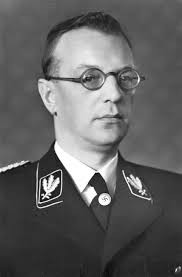
Reichskommissar Seyss-Inquart was Minister of the Interior of Austria in 1938 and was later appointed chancellor. He allowed the German troops to enter Austria without any resistance. Hitler appointed him the Regent of Austria shortly afterwards. After the raid in Poland, he also became deputy of Governor-General Hans Frank in Poland. In 1940 he was appointed Reichskommissar für die besetzten Niederländischen Gebiete. Seyss-Inquart was responsible for the deportation of more than 100,000 Jews to the concentration and extermination camps. He was found guilty of war crimes and crimes against humanity during the Nuremberg Trial and executed on 16 October 1946.
Meinoud Rost van Tonningen and Henk Feldmeijer were more popular with Hitler than Mussert and Mussert was more or less sidetracked. The NSB has now become much more radical. Feldmeijer became leader of the German SS and was loyal to Hanns Rauter, the leader of the SS and the Gestapo in the Netherlands. After serving in SS-division Wiking in Russia, he founded in 1943 the Sonderkommando-Feldmeijer which actively carried out reprisals on Dutch citizens (Aktion Silbertanne). In early 1945, Feldmeijer was also appointed to commander of a battalion of Landstorm Nederland, part of the Waffen-SS.
Hanns Albin Rauter
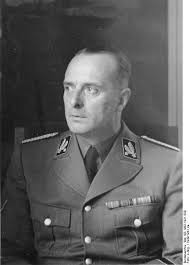
Rauter was appointed Generalkommissar für das Sicherheitswesen und hoherer SS-und Polizeiführer Nordwest on 23 May 1940. He was confidently committed to the deportation of Jewish Dutch people to concentration and extermination camps. In addition, he was responsible for the fight against the Dutch resistance and the compulsory employment of 500,000 Dutch men in Germany. He was responsible for the bloody knocking down of the February strike and the murder of 23 employees of the daily newspaper Trouw for spreading “inciting writings” with himself in the lead. In an attack by a resistance group on 7 March 1945 at De Woeste Hoeve on the Veluwe, he was injured, but survived the attack. As a reprisal, a total of 300 prisoners were executed in various places on 8 March. The Special Court in The Hague sentenced Rauter to death in April 1948 and he was executed on 25 March 1949.
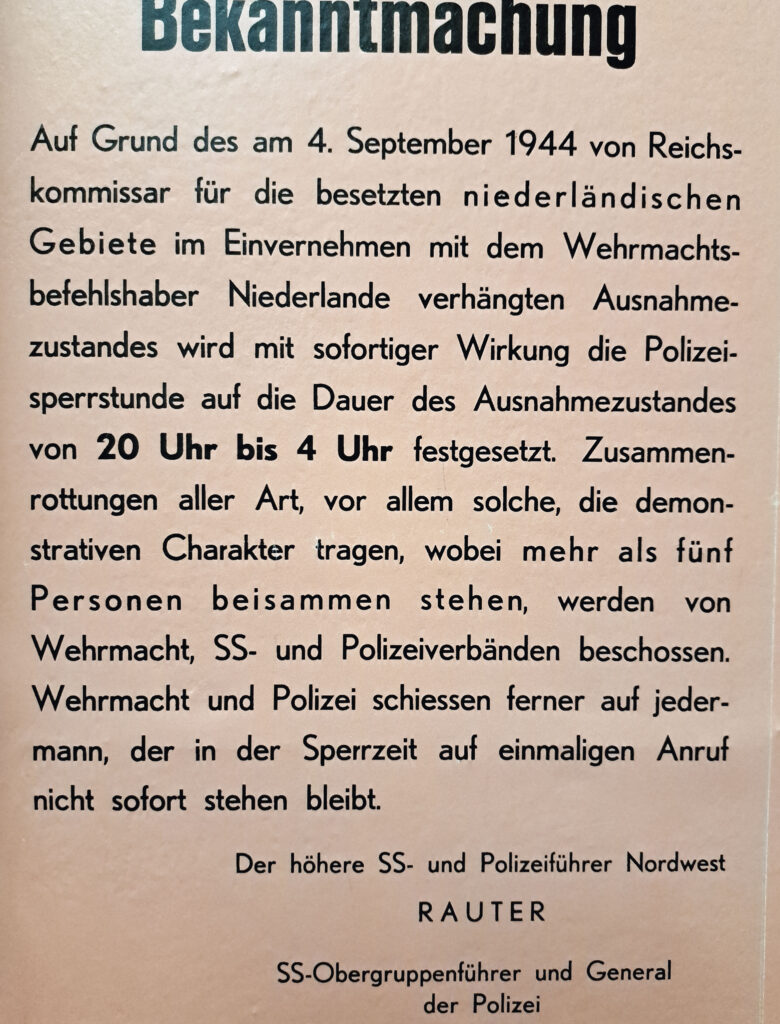
Many NSB members went to fight on the Eastern Front, but also in the Netherlands NSB’ers became active in the Landstorm Nederland. There was also the Landwacht, an organization under the wing of the NSB. In their black uniform, equipped with a shotgun (Jan Hagel), the Landstorm carried out patrols and took part in police duties.
Due to the progress of the Allies, on 5 September 1944, great panic broke out among the NSB members. Tens of thousands fled and tried to flee to Germany by train. That day is known as “mad Tuesday.”
The Jews hunters
The Jews hunters received 7.50 guilders for every Jew who was betrayed by him or her. Jews were also betrayed by Jews. Often there was a threat of deportation of the family if no Jews were appointed. It was then assumed that the family could be saved. In vain, the declarant and the family were put on transport to the extermination camps and did not (often) survive.
Tonight Jewish Hunt
Razzias in various parts of the Netherlands preceded the first train trips to Polizeiliches Judendurchgangslager Westerbork. In early July 1942, the pickup of Jewish families began in the Netherlands. They were Dutch police officers, sometimes helped by NSB aid agents, who pulled the Jews out of their homes. “Tonight, Jewish hunt, a very successful night. I think I’ve certainly already caught a few hundred Jews in these few weeks. This morning at half past four at home,” said an enthusiastic police officer.
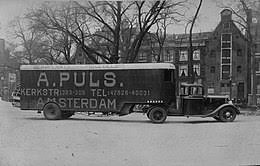
One of the best-known NSB’s was Abraham Puls, owner of moving company Puls in Amsterdam. Puls reported a large number of Jews to the Germans and then, on behalf of the Germans, cleared the houses, with the intention of making the contents of the houses available to German families who had been affected by the Allied bombing in Germany. Puls robbed 29,000 homes empty of deported Jews. The stuff often didn’t arrive in Germany. A lot was stolen by employees of Puls and other companies. Many goods were bought by Dutch traders.
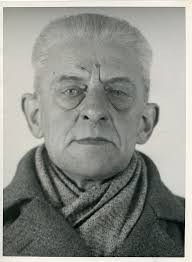
Another well-known NSB member was Jacob Feenstra. In 1940, Feenstra became a member of the NSB and the WA. He was a great supporter of fascism and had anti-Semitic ideas. In October he was appointed Heerbanleider of the WA in The Hague. In 1942 he was promoted to head of the marechaussee in Gelderland and Overijssel. He purified the police apparatus, more than twenty police were locked up or came in front of the firing squad. In Putten, six police officers refused to cooperate in the arrest of Jews. They were transported by the Sicherheidsdienst to a concentration camp in Germany. Feenstra himself was very active in the hunt for resistance people, people in hiding and Jews. He was regularly on the road and worked very purposefully.
Feenstra was sentenced to death and executed after the war. Pulse eventually received 24 years in prison. At the end of 1961 he was released and continued his career as a market merchant in plastic articles and the sale of ice cream, confectionery and soft drinks. He died on September 3, 1975.
Max Blokzijl and Anton Mussert were executed, Meinoud Rost van Tonningen committed suicide. Henk Feldmeijer was shot at on 22 February 1945 by an allied fighter aircraft. He did not survive the attack. Tobie Goedewaagen was sentenced to 12 years in prison but was given an amnesty in 1952. He died on January 4, 1980. Van Geelkerken received a life sentence, which was later converted to 20 years. In 1959, he was released. He died on March 29, 1976.
The Economic Collaborators
The economic collaborators were usually “ordinary” Dutch people who worked with the Nazis to take advantage of the situation. The notary, the real estate agent and the middle-class worker liked to trade in looted, Jewish-left houses. A hairdresser who lobbied with the Nazis to take over a hair salon abandoned by the fled Jewish owners. They were all lightly punished after the war.
The Dutch police
A sensitive point in the history of the police in World War II is the involvement of officers in the deportations of Jews. The fact is that Dutch agents have been deployed to arrest Jews during raids. In June 1941, 250 police officers were deployed in Amsterdam to arrest 200 Dutch and German Jews. The arrested Jews were transported to Mauthausen concentration camp. Municipal police forces were also deployed in raids in other cities. Well-willing agents faced a dilemma. If they resigned, the place was taken by an NSB member. If they stayed at the post, they made dirty hands. Also, many police officers could not afford the dismissal financially.
In 1943, the church interfered. Police officers were not allowed to cooperate in the arrest of young men for labor in Germany and the arrest of Jewish fellow citizens. Some officers began to openly refuse work, others decided to go into hiding. To prevent this, the occupier introduced the Sippenhaft measure, which meant that family members of in hiding officers also had to be arrested. In late 1943, 150 relatives of policemen were imprisoned in Vught.
The situation in Belgium and France
The situation in Belgium and France was similar to in the Netherlands. In Antwerp, three major raids were carried out by the Germans in August, September 1942, assisted by Flemish Nazi sympathizers and the Antwerp police.
During a two-day action in Paris and the surrounding area, French police arrest more than 13,000 foreign Jews, including 4000 children. More than 8000 people are temporarily imprisoned in the Velodrome d’Hiver. In the following weeks, the Jews are deported to Auschwitz, where most are murdered immediately. Jews are also arrested in other parts of France. The French police are cooperating.
The police are your best friend. During the Second World War, it was not.
Source:
Historiek.net – The Dutch police in the Second World War and History of the NSB
Anne Frank house – Great raid in Paris
Westerbork memory center
Various Wikipedia articles